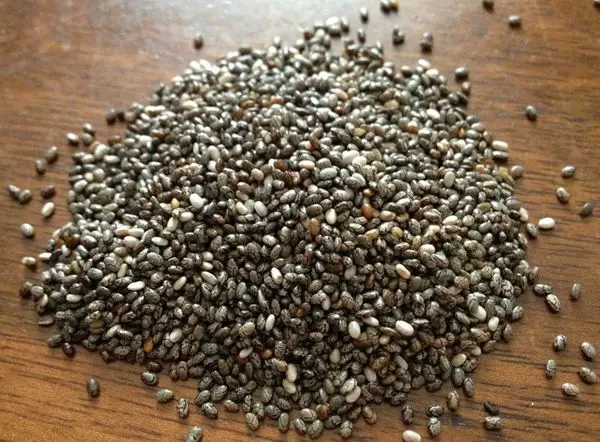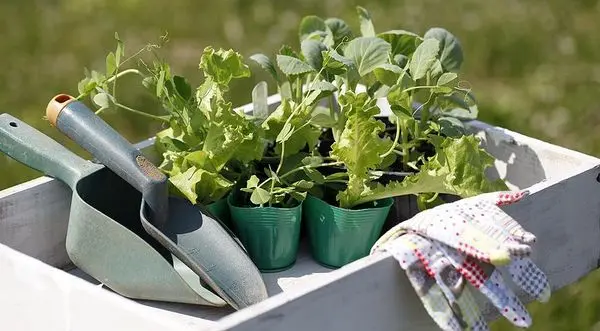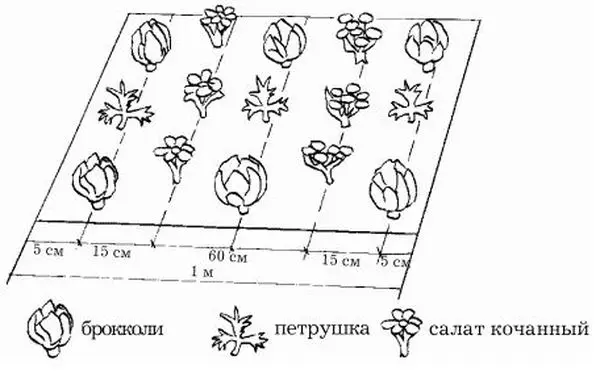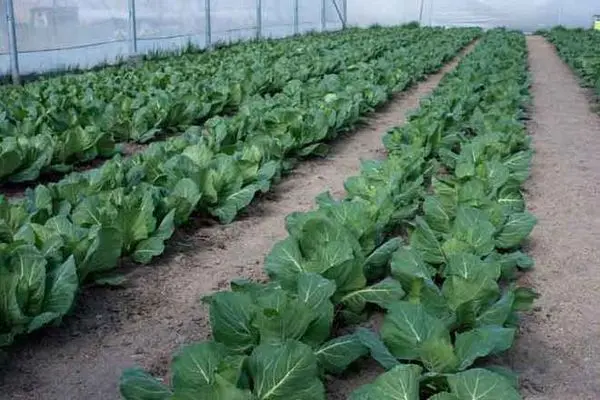Contents
Broccoli is a tasty and healthy variety of cabbage. In addition, this vegetable is resistant to cold and relatively unpretentious, so it is suitable even for beginner gardeners. Let’s find out how to organize the cultivation of broccoli in order to get regular abundant harvests.
Growing broccoli seedlings
Growing broccoli is most often done using seedlings. It is this method that allows you to get good harvests in the middle lane, in the Moscow region, in Siberia and the Urals.
What varieties to choose

When choosing a variety, be guided by the climatic conditions of your region. In the northern regions, it makes sense to purchase only early or mid-early varieties and hybrids that ripen in 60–100 days. These include:
- Batavia F1;
- Curly head;
- Moscow souvenir F1;
- Vitamin.
Medium varieties ripen in 105–130 days. Among them:
- Ironman F1;
- Fortune;
- Dwarf.
In the southern regions, the cultivation of late varieties, ripening in 130–145 days, will also be successful. These include:
- Marathon F1;
- Agassi F1;
- Parthenon F1.
When buying seeds, make sure that they do not expire. For planting, it is recommended to use the largest.
Terms of sowing

Seedlings are planted in late March or early April, approximately 30–40 days before transplanting into open ground. In this case, early varieties give a harvest in June.
Preparation of seedlings

Before planting, it is recommended to keep the seeds for 20 minutes in warm water, the same amount in cold water, and, finally, 6-7 hours in a solution of “Heteroauxin” or another growth stimulant.
For growing broccoli seedlings, boxes 25 cm high are suitable. Drainage is laid on their bottom with a layer of 1 cm. The soil should be nutritious and loose, easily permeable to water and air. A mixture of equal parts of soddy soil, humus, river sand and wood ash is well suited.
Before planting, the soil is sprayed with a spray gun, then grooves 1 cm deep are made in it, seeds are planted in them, sprinkled with soil and gently compacted. The optimal distance between rows is 3 cm, between plants of the same row – 2,5 cm.
Before the emergence of seedlings, the temperature in the room should be at the level of + 19 … + 20 ° С. Then, if possible, it is lowered for a week to + 9 … + 11 ° С. After that, the temperature regime is maintained at +12…+17 С° during the day and +8…+10 °С at night.
The soil is kept moist, but not flooded so that fungal diseases do not develop.
Two weeks later, a pick is carried out in individual pots, preferably peat. The soil used is the same as for seeds. After that, the cabbage is shaded from direct sunlight and at the same time the temperature is raised to + 20 … + 22 ° С.
If the seedlings reacted normally to the pick, two days later they are fertilized with nitrophos: 1 tbsp. l. per bucket of water, 50 ml of solution for each pot.
Two weeks before landing, the final hardening begins. First, the seedlings are taken out to the balcony or veranda for 2-3 hours, gradually increasing this time. 2-3 days before planting, the cabbage is left to spend the night on the street.
Sowing seedlings and caring for them

Seedlings are transplanted into open ground when 5 or 6 true leaves appear on the stems.
The place should be well lit. A week before planting, the bed is dug up, weeds are removed and rotted manure or compost is introduced into the soil at the rate of 3 kg per 1 sq. m. The holes are dug in 1-2 days according to the scheme 35×60 cm.
Transplantation is preferably carried out on a cloudy morning. The wells are watered and 6–7 g of nitrophoska are added to them, mixing it with the ground. Then seedlings are placed in them and watered again. If there is a threat of sub-zero temperatures, cabbage should be covered with jars or cut plastic bottles.
Within a few days after transplanting, the seedlings are shaded from the bright sun. On hot days, it is not only watered, but also sprayed. Two weeks later, hilling is carried out, then another one a week later.
Video “We plant broccoli seedlings in the ground”
From this video you will learn how to properly plant broccoli in open ground.
Cultivation of cabbage in the open ground
A warm spring is important for growing broccoli in open ground, so this method is most suitable for warm regions, such as the Krasnodar Territory. In the middle lane, it is used with caution.
When to land
Planting seeds in open ground is allowed after the average daily temperature reaches +10 ° C and lasts a week. For the middle lane, this is approximately the beginning of May.
Some experts recommend planting cabbage at the moment when the buds of apple trees awaken.
Disembarkation instructions

Broccoli does not respond well to soil in which other types of cabbage have previously grown. The best predecessors for her are cucumbers, tomatoes and legumes.
If the soil is acidic, a few weeks before planting, lime should be added at the rate of 200 g per 1 sq. m.
A week before landing on 1 square. m beds contribute 4-5 kg of humus or compost or 1 glass of wood ash.
Water the soil before planting. The holes are made according to the scheme 60×40 cm, 1 cm deep. 2-3 seeds are planted in each.
If there is a threat of frost, the bed can be covered with a film or spunbond.
Care
An important rule of care is regular abundant watering. For young plants, it is desirable that the soil is constantly slightly moist.
Fortified cabbage can be watered once a week, but if the daytime temperature is above +26 ° C, it is advisable to do this more often. Spraying is very useful for broccoli, especially if the soil is clay and heavy.
The rules of agricultural technology also include frequent top dressing. The first time fertilizer is applied 12-14 days after planting seedlings. You can use a solution of chicken manure (1:20) or mullein – 250 g per bucket of water. In the second case, you must also add a teaspoon of urea or other nitrogen fertilizer. Application rate – 1 liter per 1 sq. m.
After 18–20 days, nitrogen fertilizers, such as ammonium nitrate, are applied.
The third top dressing is carried out when inflorescences are formed. Under each plant, 4 g of superphosphate, 1 g of potassium sulfate and 2 g of ammonium nitrate, dissolved in 1 liter of water, are added.
After collecting the central heads, the same substances are added, but already in a ratio of 2:3:1, respectively.
Possible diseases and pests

The main pest affecting broccoli is the cruciferous flea. It may appear already on seedlings recently planted in the ground. Before the formation of inflorescences, it can be fought with the help of the Iskra preparation. Then only spraying with infusions of tobacco dust or wood ash is used. You can also sprinkle the plant with a dry mixture of these components.
Herbs planted nearby also help against other pests:
- celery from an earthen flea;
- aphid dill;
- peppermint from cabbage.
Of the diseases for cabbage, fungal infections are dangerous: keel, blackleg, alternariosis, powdery mildew, white. Usually they appear due to care errors, in particular overflow. To combat them, fungicides are used, and if the inflorescences have already appeared, then folk remedies: a solution of soda, potassium permanganate, a daily infusion of ash.
Peculiarities of growing in a greenhouse
Varieties such as Calabrese, Tonus, Lazarus, Caesar, Continental, as well as other early varieties and hybrids are particularly well suited for greenhouse cultivation. If the structure is heated, seeds can be planted as early as December, but in this case additional lighting with phytolamps is necessary. In an unheated thick polycarbonate greenhouse, seeds can be planted in March.
Before planting, the soil and seeds must be treated with a solution of potassium permanganate to get rid of pests and fungal spores.
Humidity should be at the level of 80-85%. Its excess will provoke fungal diseases, its deficiency – slow development and poor yields.
Fertilizers are applied in the same way as for open ground.

Harvesting and storage of crops
It is important to cut the broccoli heads before they begin to bloom. Otherwise, both taste and nutritional value deteriorate. You can determine the right moment by the rate of ripening for a particular variety.
Heads of cabbage should be dark green, elastic and dense. It is best to cut them in the morning. To do this, use a sharp and clean knife so as not to infect the infection.
This cabbage cannot be stored fresh for a long time, it can only be canned or frozen.
Although broccoli is quite demanding on watering and fertilizing, its hardiness helps it survive small care mistakes. Provide the plant with suitable conditions, and you will be rewarded with a generous harvest.









